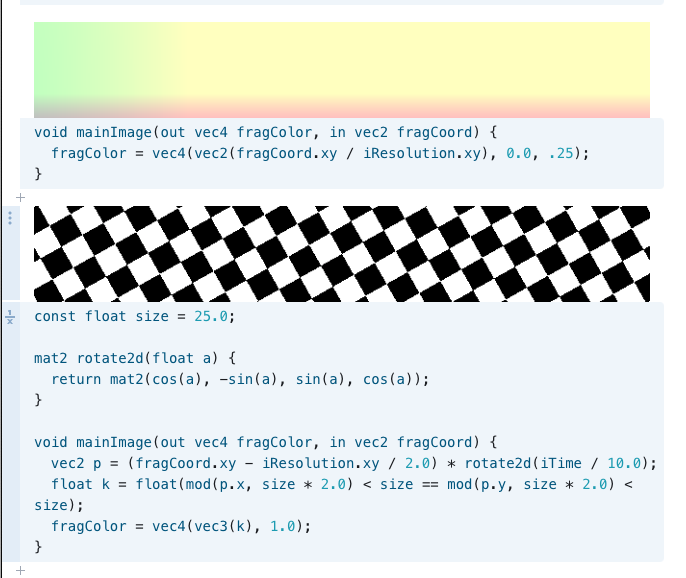


If the shader uses functions or constructs that do not have an equivalent in the specified targets, qsb will fail. This makes them compatible with OpenGL ES 2.0 and higher, OpenGL 2.1 and higher, and OpenGL core profile contexts of version 3.2 and higher. The space between the suffix and the version is optional (not having the space can help avoiding the need for quoting).įor example, Qt Quick's built-in materials (the shaders backing items, such as Image, Text, Rectangle) all prepare their shaders with -glsl "100 es,120,150" -hlsl 50 -msl 12. The list must include GLSL-style version numbers, with an optional suffix ( es, indicating GLSL ES). These parameters are all followed by a comma-separated list. What gets generated in addition depends on the command-line arguments -glsl, -hlsl, and -msl. Thus, the extension must be one of the following: The type of shader is deduced from the input file extension. This helps making the differences in resource bindings between the various shading languages transparent to the users of the Rendering Hardware Interface, and allows everything in Qt to operate with Vulkan/SPIR-V style binding points as they are specified in the original Vulkan-style GLSL source code. Internally this allows mapping a SPIR-V style binding point 0 to the HLSL register b0 and binding 1 to t0 and s0. For example, with HLSL we saw a section like this above:

At run time the appropriate shader is picked up automatically by the Qt Rendering Hardware Interface that sits underneath Qt Quick and Qt Quick 3D.īesides translating the SPIR-V bytecode back to higher level source code, the system takes care of additional problems, such as ensuring correct mapping of SPIR-V binding numbers onto native resources.

This package can now be used by Qt Quick with all supported graphics APIs: Vulkan, Direct 3D, Metal, OpenGL, and OpenGL ES. Out.fragColor = float4(c.xyz, _27.uAlpha) SPIRV_Cross_Output main(SPIRV_Cross_Input stage_input)įragment main0_out main0(main0_in in ], constant buf& _27 ], texture2d tex ], sampler texSmplr ])įloat4 c = tex.sample(texSmplr, in.v_texcoord) SamplerState _tex_sampler : register(s0) įloat4 c = tex.Sample(_tex_sampler, v_texcoord) For examples, qsb -x spirv.100 -o myshader.spv writes the SPIR-V binary into myshader.spv. This allows writing a given shader from an existing. For example, qsb -d will print the reflection metadata (in JSON form) and the included shaders. There are three major modes of operation: Only fatal errors will beįile Vulkan GLSL source file to compile Modes of Operation Shader in the shader pack with the contents of aįile. Source->SPIRV->targets, do source->SPIRV->target p, -per-target Enable per-target compilation. With xcrun metal(lib) and stores that instead of t, -metallib In combination with -msl builds a Metal library c, -fxc In combination with -hlsl invokes fxc to store o, -output Output file for the shader pack. O Invoke spirv-opt to optimize SPIR-V for
Vec2 pack download full#
g Generate full debug info for SPIR-V and DXBC msl Comma separated list of Metal Shading Language hlsl Comma separated list of HLSL (Shader Model) glsl Comma separated list of GLSL versions to zorder-loc The extra vertex input location when rewriting b, -batchable Also generates rewritten vertex shader for Qt v, -version Displays version information. help-all Displays help including Qt specific options. ?, -h, -help Displays help on commandline options.


 0 kommentar(er)
0 kommentar(er)
